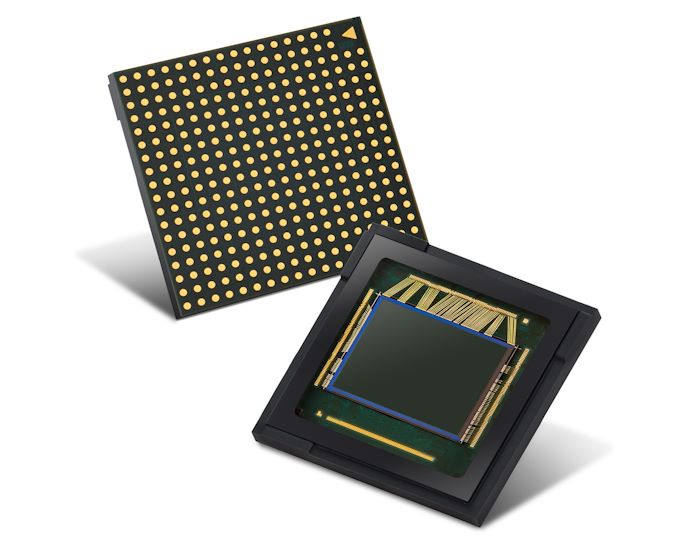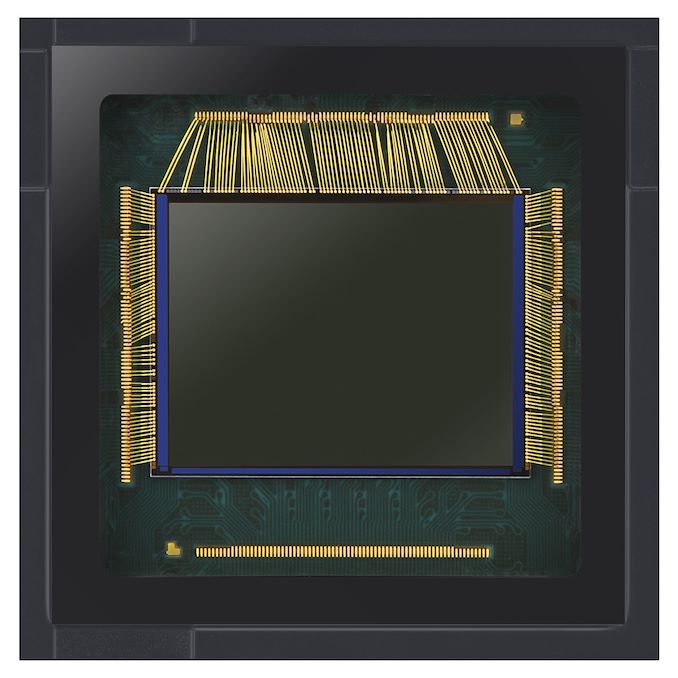Samsung Announces New 50MP Dual-Pixel and Quad-Bayer ISOCELL Sensor
by Andrei Frumusanu on May 19, 2020 6:30 AM EST- Posted in
- Mobile
- Smartphones
- Sensor
- Samsung LSI
- Camera Sensors
- Samsung GN1

Samsung today has announced a brand-new flagship sensor in the form of the ISOCELL GN1. The new sensor is seemingly a follow-up to the 108MP ISOCELL HMX and HM1 sensors that we’ve seen employed by Xiaomi devices and the Galaxy S20 Ultra.
The big changes in the new GN1 is that it uses are different optical formula to the existing larger megapixel sensors. It’s only a bit less than half the resolution at a maximum of 50 megapixels, however the per-pixel pitch grows from 0.8µm to 1.2µm.
It seems that Samsung’s main rationale to grow to a larger pixel pitch wasn’t just the per-pixel increased light gathering ability, but rather the enablement to re-introduce full sensor dual-pixel phase-detection. The existing 108MP sensors that have been out in the market have been using 2x1 distributed on-chip lens phase detection autofocus pixels on the sensor, with the autofocus performance not been nearly as performant and a dual-pixel PD solution. In theory, the GN1 using dual-pixel PD pixels means that it uses pairs of 0.6µm x 1.2µm photo sites.
The GN1 is also the first sensor to pair the dual-pixel technology with a quad-bayer colour filter array, which Samsung calls Tetracell. In effect, the 50MP sensor will natively bin 2x2 pixels to produce a 12.5MP image with effective pixel pitches of 2.4µm. Interestingly, Samsung also talks about providing software algorithms to be able to produce 100MP images by using information from each individual photodiode – which all sounds like pixel-shift super resolution techniques.
The size of the sensor remains at a large 1/1.33” – in essence it’s most comparable to Huawei’s current 50MP sensor that is found in the P40 series phones – with the addition of Dual Pixel PD.
The sensor still supports 8K30 video recording, but we hope it’s able to achieve this with a smaller image crop compared to the current HM1 implementation in the S20 Ultra.
These new generation sensors are extremely challenging for vendors to properly use – besides the increased computational workload to actually use the full resolutions (the reduction from 108MP to 50MP will help there), there’s also the challenge of providing adequate optics that can take advantage of the resolution. It seems the GN1 here is a bit more reasonable in its demands, other than its sheer large size.
Related Reading:
Source: Samsung Newsroom











68 Comments
View All Comments
wax2142 - Tuesday, May 19, 2020 - link
ok here's a bit to unpack here....maybe if you DM I can give you a full run down of digital photography...but pertaining to your question, no, it doesn't mean you have 2 pixels for the price of one. Dual Pixel actually refers to the method of autofocusing. Essentially 1 of the photodiode is dedicated for capturing light information and the other to essentially to detect phase differences between pixels and use that information to tell the lens how much adjustment is needed to get the photo in focus. you can learn more from this video here: https://www.youtube.com/watch?v=Tk-Y34nMkeYso in short 50MP dual pixel AF is basically a 50MP sensor with Dual Pixel phase detection for fast on sensor autofocus. Because the alternative autofocus methods are : Having a dedicated phase detection sensor as in DSLRs (so yes DSLRS have 2 separate sensors located separately), or the less robust contrast detection AF for Image sensors that do not have an integrated phase detection capability (Eg some cheaper point and shoot). Because contrast detect AF methods can only tell that the image is out of focus but cant really immediately tell by how much or if the image is front or back focused, this AF system is not really favored as focus speed tends to be slow , requiring multiple iterations to finally nail the right focus, and leads to focus hunting as the camera continually oscillates between over/under focusing.
saratoga4 - Tuesday, May 19, 2020 - link
>Essentially 1 of the photodiode is dedicated for capturing light information and the other to essentially to detect phase differences between pixelsNo, there is not a phase and a light photodiode. Both photodiodes record intensity from a common microlens. Each is read out separately, and phase inferred from the difference in intensity between the pixels (tilt in the wavefront will cause either the left or right pixel to get more light). The final pixel value is calculated as the sum of both photodiodes and the phase as the difference.
Spunjji - Friday, May 22, 2020 - link
that's the first time I've seen this explained in a way I understood. Thanks!s.yu - Thursday, May 21, 2020 - link
CDAF is usually more accurate than pure PDAF, the reason PDAF is preferred in phones is their deep DoF, so accuracy generally doesn't matter.Spunjji - Friday, May 22, 2020 - link
It's genuinely more about the speed than the accuracy. It's the same reason mirrorless cameras moved from the more-accurate CDAF to hybrid PDAF - CDAF speed is hard-limited by how fast you can move the lens elements, how fast you can read out from the sensor and how fast you can perform the necessary calculations. That all sped up a *lot* over the past 10 years, but it's still not optimal.saratoga4 - Tuesday, May 19, 2020 - link
>How does the dual pixel work ? There are two photodiodes for phase detection under each pixel.There are two separate pixels sharing a single microlens.
>So why doesn’t it make the sensor twice the resolution ?
They share a microlens, so each records the same spatial information, but different angular information. You can use them to infer the shape of the wavefront hitting the pixels, but not to extend resolution (at least not easily).
>Does that mean effective area that gathers light is less than without dual pixels ?
Yes, which is why they don't use it with the smallest pixel sizes.
trivik12 - Tuesday, May 19, 2020 - link
its definitely the right decision to reduce MP from 108 to 50. I am curious how optics work. Ultimately sensor has good possibilities but overall quality is dependent on optics and software. I hope this is used with Note 20 and they knock it out of the park.boozed - Tuesday, May 19, 2020 - link
"with the autofocus performance not been nearly as performant and a dual-pixel PD solution"Ow my brain
watzupken - Wednesday, May 20, 2020 - link
We are back in the megapixel race again, just like we did for those portable cameras in the past. But frankly speaking, there is so much this supposed Quad Bayer or tricks can do. As it stands now, we are no longer seeing significant mobile phone photography image quality improvements. Huawei managed to pull off improvements mainly due to a larger sensor with their P40 Pro, but unless you have an eye for good quality photos, or deliberately looking for flaws, most people will not be able to discern the difference from the output of all the flagship phones. At some point, this megapixel bubble will burst, and I think we are not too far from it now.Tomatotech - Wednesday, May 20, 2020 - link
I don't understand: This sensor is 1/1.33", or converted to sensible units, 0.75" or 1.9cm wide. How on earth is that and the associated lens / imaging pathway going to fit into a smartphone? I imagine it will also require >2cm wide lenses.